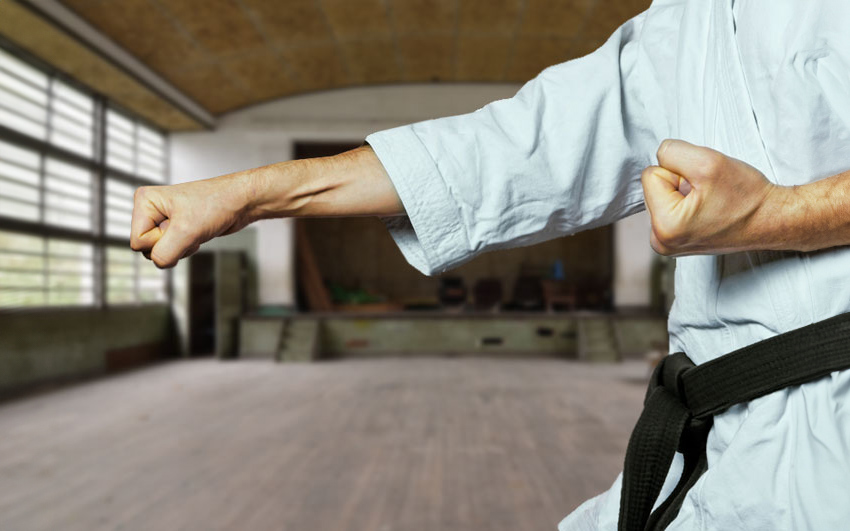What is the best Karate style?
There’s a multitude of Karate styles out there, some originating from China, some other originating from Okinawa or Japan.
One question that I often get is “What’s the best Karate style?“. Karate has captivated practitioners and enthusiasts worldwide. Each style, unique in its philosophy, techniques, and approach, offers a distinct experience to its practitioners. In this exploration, we delve into the intricate world of karate, comparing and contrasting various styles to address the often-asked question: “What is the best karate style?”
Our journey through this ancient martial art will provide insights into the rich history, fundamental techniques, and philosophical underpinnings of different karate styles, guiding enthusiasts in making an informed decision about which style resonates most with their personal goals and preferences.
In this post, you’ll discover that there is no such thing as a “best Karate style”. Please read on and discover why.
What’s a Karate style?
I know that you know what’s a style, you know Shotokan, Goju-Ryu, and Shorin-Ryu, but I’m talking about the concept of “style”. A Karate style, is a way to see the world, it’s a way to express your Karate. When you belong to a style, you don’t see Karate as a whole but do you see it as a fraction of the whole.
It’s like wearing colored glasses. If you wear red colored glasses, the world is going to be red, and if you wear blue tinted glasses, then the world will be blue. That would be an illusion to say that the world is red or blue, right? Your glasses are representing only a part of reality, not reality itself, just like a Karate style does not represent the reality of Karate.
What do you mean by “best” style?
Many people are asking “what’s the best Karate style”, but think it’s essential to define what do people mean by “best”. I’m assuming that when people are looking for the best Karate styles, they mean best in terms of effectiveness and practicality. But effective, where? In a ring? In a competition? In self-defense?
For me, the best Karate style allows the practitioner to defend himself or herself during real-life aggression, and it’s on that principle that this article is based on. It’s important to understand that not every Karate style are created equal. To understand this, we will see that, independently of styles, there are three main types of Karate and each type as very different objectives and purpose.
What are the main types of Karate?
As you probably know, there’s a lot of different Karate styles. I wrote a good article about it, I suggest you read it.
Karate is divided into styles, but besides that, I think it’s pretty fair to say that there are three main types of Karate and that each has a different vision of what effectiveness is. The three types of Karate are Okinawan Karate, Japanese Karate, and Sports Karate. Let’s explore the differences between each type regarding their objective and purpose.
1. Okinawan Karate
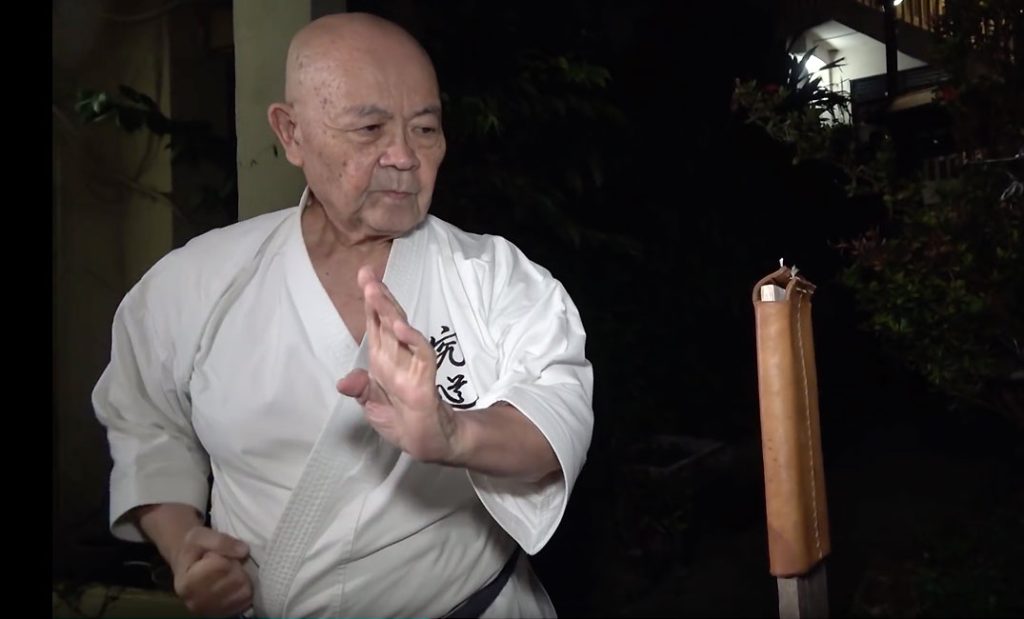
Karate was developed in the Ryukyu Kingdom before its 19th-century annexation by Japan (Okinawa). It should be clearly understood that Okinawan Karate is the original Karate. It’s not a combat sport but a martial art dedicated to personal protection and life preservation — it’s first and foremost a practical, self-defense based type of Karate. That’s the reason why it was created in the first place.
Although Japanese and Okinawan Karate share similarities, they are very different in their objective, purpose, and application. Compared to Japanese Karate, Okinawan Karate is smooth, relaxed, and powerful. It utilizes higher, more natural postures as well as more practical techniques. Okinawan Karate is more a close range martial art that includes lots of grabbing, twisting and dislocating, throwing, trapping, and pressure point techniques. When fighting, you walk straight in and destroy your opponent; there is no fooling around. The goal is not to exchange technique, but the clear and simple destruction of the opponent. You can’t get more practical than Okinawan Karate.
2. Japanese Karate
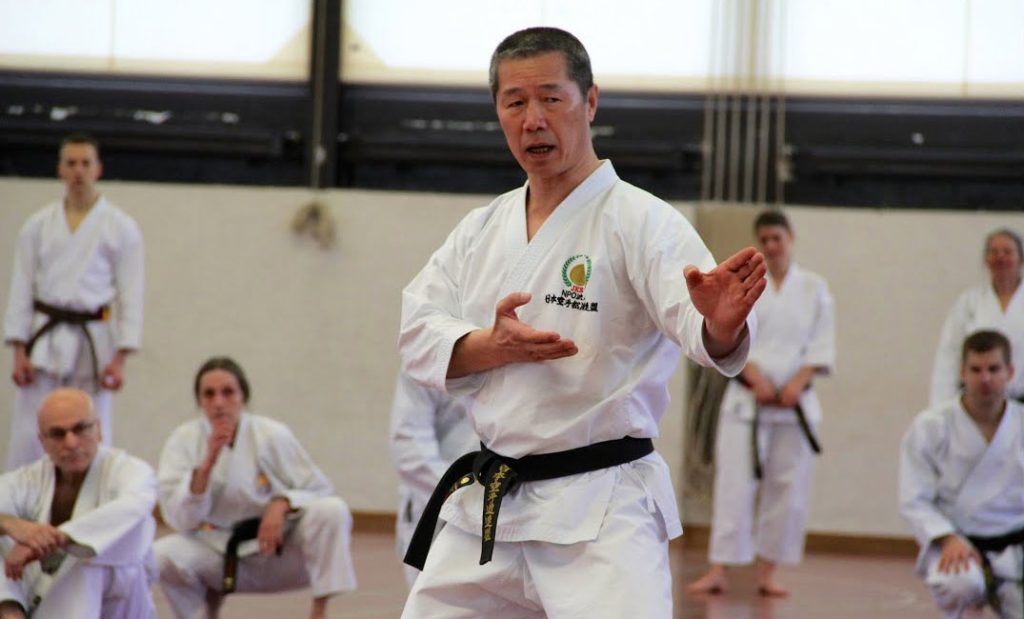
At the beginning of the 20th century, Okinawan Karate traveled to mainland Japan where it was quickly transformed into a martial art oriented towards social education more than practicality and self-defense.
To understand the reason for this transformation, it’s essential to understand the socio-economic context of Japan at the time. Karate was used, as well as other “new” martial arts like Judo (watered down jujutsu) and Kendo (watered down Kenjutsu), as a way to mobilise, educate and shape the Japanese youth in order to revitalize Japan after the depression that followed World War I. Martial arts played a significant role in the rise of Japanese nationalism.
Gichin Funakoshi (and his son Gigo), the founder of Shotokan Karate, tried to broaden its appeal. Many of the more deadly aspects of Okinawan Karate were removed, including many strikes, joint locking, and throwing techniques. Karate started being taught in schools and universities as methods of education for the Japanese youth and not as a self-defense method. As a result, effectiveness and practicality became attenuated and relegated to the background.
The is a great paper on this subject from the Department of Anthropology of the University of Iowa called The Japanization of Karate, it’s quite interesting.
Years later, after World War II, Karate transformed into a Budo, a type of martial art far less concerned with effectiveness and practical application of techniques in combat, but much more focused on the spiritual and moral development of the individual.
NOTE: Understand me well, I’m not saying that everybody practicing a Japanese Karate style is uninterested in effectiveness, but in general, Japanese Karate styles tends to be more focussed on social education and personal development than on practicality. Maybe your school or your style is not like that, then it’s great.
3. Sports Karate
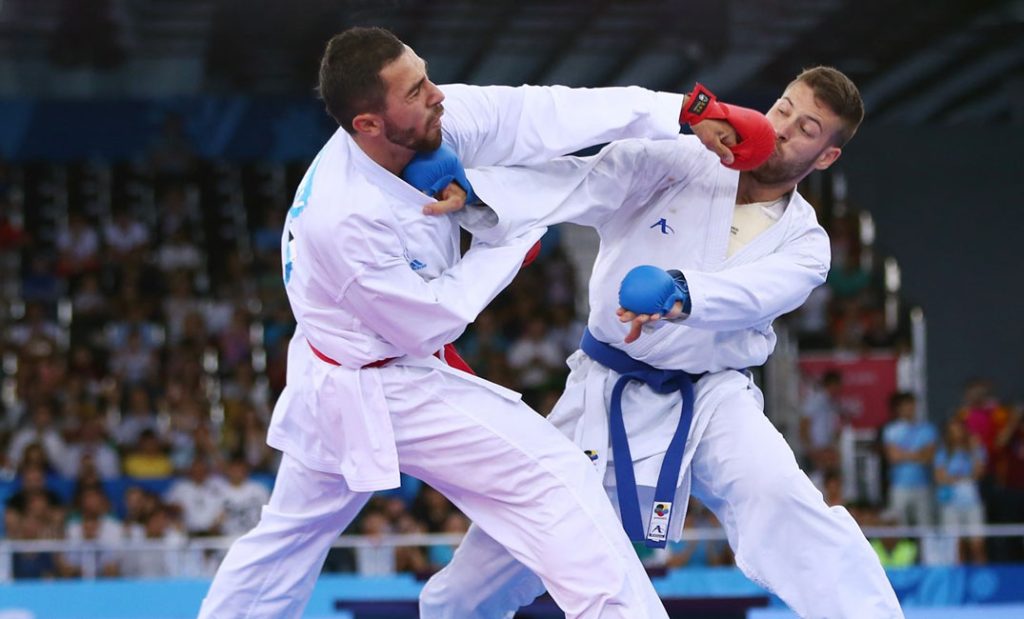
As we saw before, the objective and purpose behind Okinawan Karate is self-defense and survival. For its part, Japanese Karate emphasizes self-development and spiritual growth. Sports Karate is derived from Japanese Karate and is more about competition and scoring points than anything else.
When Karate arrived in Japan in the 1930s, it was quickly transformed into a practice oriented toward competition. The Japanese people love competition; they see it as a way to test the spirit of their participants. As I mentioned before, many techniques were removed from Okinawan Karate, and new techniques were added like high kicks, hook kicks and jump kicks to match the competitive nature (often point-scoring) of sports Karate. Okinawan kata was also transformed with wider, longer, and lower stances, making it more appealing and aesthetic for competition.
In sport Karate, the techniques are more quick, light and reactive, and are designed for sports fighting, not for self-defense. Because in sports Karate, there are weight classes, protective equipment, and rules, the state of mind of competitive fighting (whether point-based or full-contact) is different from the one required during a self-defense situation or personal protection scenarios.
As a result, sports Karate practitioners develop attitudes, habits, and reflexes that are dangerous to use in a personal defense scenario. There’s nothing wrong with the sports Karate, but as you can see, its objective and purpose are oriented towards competition and not practicality.
Summary Table
| TYPE | ORIGIN | CREATION | MAIN PURPOSE |
|---|---|---|---|
| Okinawan Karate | Ryukyu Kingdom / Okinawa | 14th Century | Self-Defense |
| Japanese Karate | Mainland Japan | 20th Century | Physical & social education |
| Sports Karate | Japan, Europe, America | 20th Century | Sports Competition |
What is the best style of Karate for your body type?
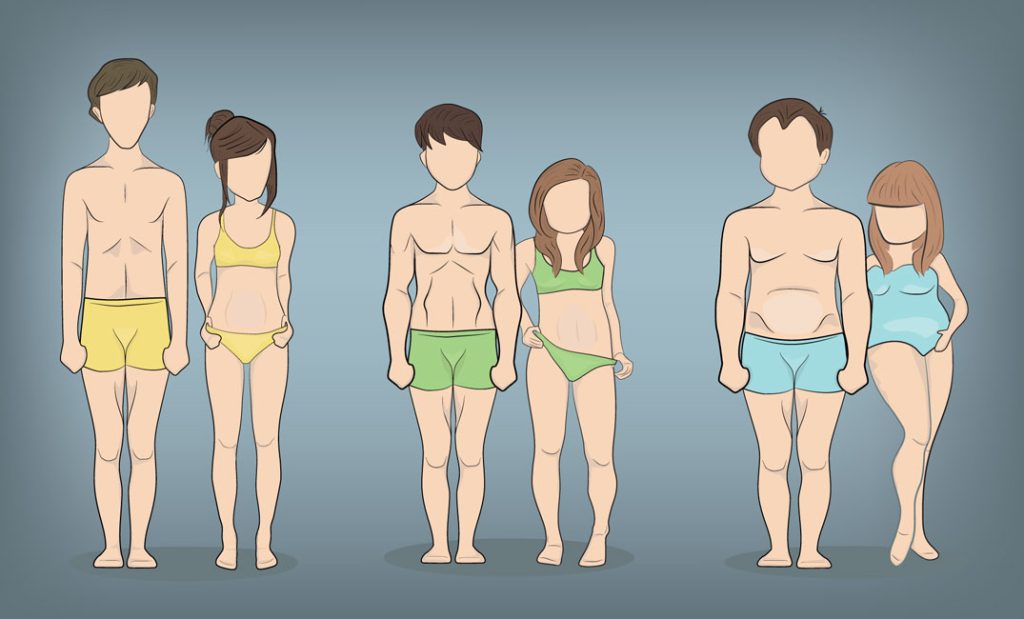
A lot of people say that you should choose your Karate style based on your body type. Personally, I don’t believe you should limit yourself to a particular style because of your body type.
Your body type will definitely influence the way you practice Karate. I don’t care what anybody says that’s just how it is. An individual with a large build is not going to spar or even do self-defense or kata the same way a tall and slim individual would. The very nature of their body is influencing not only the way they move but also their psychology towards movement and its application.
That being said, we should not see body type as a reason to practice or not to practice a specific style. During practice, your body is going to change and adapt anyway independently of the kind of body that you have. Don’t create imaginary reasons why you can or can’t practice a particular style.
Please remember that there is nothing in Karate that wasn’t meant to be practiced by everyone. In other words, whether you are small or tall, large build or frail, you will make your Karate work for you.
Go beyond limiting concepts.
What are the characteristics of “the best Karate style”?
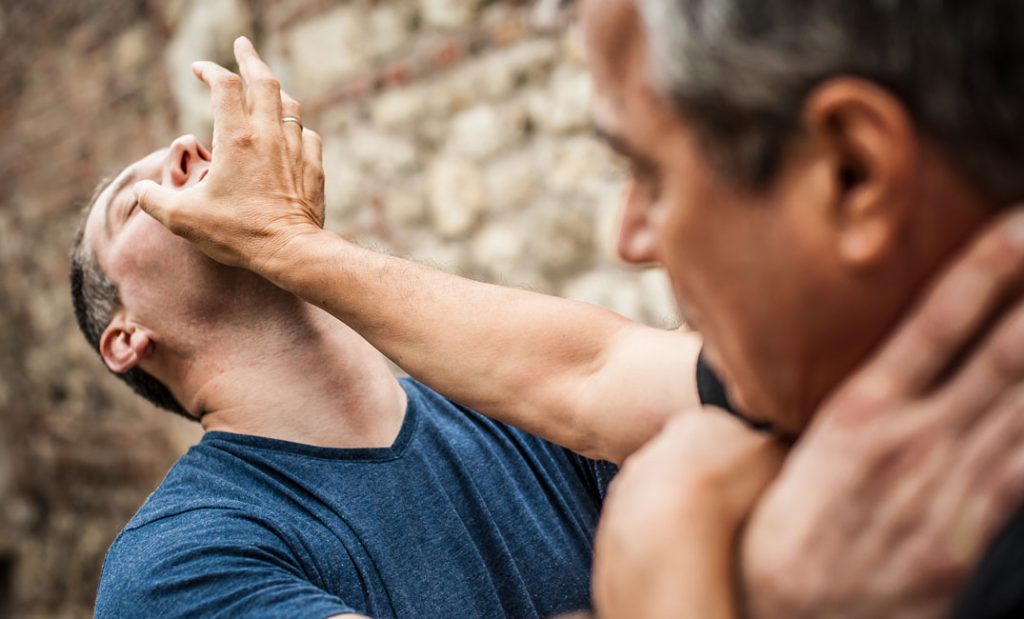
We have already established the fact that what makes “the best Karate style” is its level of practicality and effectiveness in real life scenarios. Now, let’s discover what this means.
As we saw, Karate was created for self-defense, that’s the essence of it. Without efficiency and self-defense in mind there is no Karate, so for me, “the best Karate style” has self-defense at its core. Of course, like every other style, it includes kihon, kata, and kumite.
More than 25 years ago, after a class, a woman came to me and told me that she was raped weeks before and she’s looking for a school that can teach real self-defense. That meeting with this woman reinforced and solidified in me, even more, the desire to give my students practical tools to defend themselves. I’m talking about teaching kids and adults, men and women, real practical Karate that can allow them to protect themselves if their physical integrity is compromised.
1. Understands real aggression
The “best Karate style” understands the reality of self-defense, it recognizes the nature of an actual violent assault. It understands that sparring is entirely different than self-defense. Katas and sparring are a means to an end, not the end itself. Go on YouTube and look at some videos there you understand pretty quickly what real aggressions are.
2. Always has effectiveness in mind
The “best Karate style” understands that efficiency starts in your mind. When you’re training, whether you’re doing drills, kata or sparring, you should always keep in mind that whatever you’re doing has to be effective in a real life confrontation. That should be the state of mind in which you train.
Don’t let it slide, don’t allow techniques or applications that are not suitable for the streets. It takes a lot of courage to observe ourselves during training and see if we are doing it realistically or not. Sometimes we get caught into patterns that can, unfortunately, be detrimental to us in terms of practicability. So we have to be honest and humble enough to observe ourselves, observe our practice, and adjust if needed.
3. Covers every range
The “best Karate style” teaches you to be comfortable in every range. What does that mean? Well, it means that in reality, the distance at which you are going to defend yourself from the opponent is not always going to be the same. Maybe that’s the case then training in the dojo, but not on the street. Sometimes the opponent is going to be close, sometimes he’s going to be far sometimes he’s going to start close and push you, sometimes he’s going to start far away and come close to you.
During a real confrontation, the distance between you and your opponent will vary and change. You have to be able to deal with those ranges. Typically we say there are three ranges: the long range which is the kicking range, the medium range which is the punching range, and the short range which is the elbow/grappling range. Because yes, grabbing range existing Karate!
4. Practices sparring
The “best Karate style” practices sparring. That being said, it’s essential to understand that you’re never going to defend yourself the way you spar in the Karate dojo. The reason why sparring is important is that it’s teaching you to adapt to your opponent’s movement, something not possible during the practice of kata or kihon, for example. Working with a partner on drills is important, but you’re dealing with prearranged patterns and fixed tempo. That’s why you need to practice sparring with a live moving partner.
5. Practices Self-defence
Another important characteristic of the “best Karate style” is that it practices not only sparring but also self-defense, that’s a must! In each class, you need to have time devoted exclusively go to the practice of self-defense. You need to learn how to deal with “street attacks” and not perfectly delivered Karate punch or kick. There’s a massive difference between the two, but unfortunately, that’s something most people don’t realize. Karate attack has a specific pattern to it a certain rhythm, a certain tempo.
With experience, you can predict them just by looking at your opponent or training partner. Therefore you need to train against non-conventional, non-traditional attacks and grabs (because real life aggression can involve grabbing, not only strikes!). Be aware that it is imperative to learn how to defend yourself against these unconventional scenarios in terms of Karate practice.
6. Trains against Weapons
The “best Karate style” teaches you how to defend yourself against weapons. In a real life-threatening situation, it’s entirely possible that your opponent is going to be armed, so you want to be able to deal with that. You have to be ready to defend yourself against baseball bats, knives, scissors or whatever else. That’s why most Okinawan Karate practitioners train in Kobudo as a way to learn how weapon functions and to deal with it.
7. Trains against more than one opponents
The “best Karate style” teaches you how to defend yourself against multiple opponents. As we just saw, in a self-defense situation, it’s possible that your opponents going to be armed, and it’s equally likely that there’s going to be more than one opponent. The best Karate style trains you for such scenarios.
The Sensei Matters More Than the Style
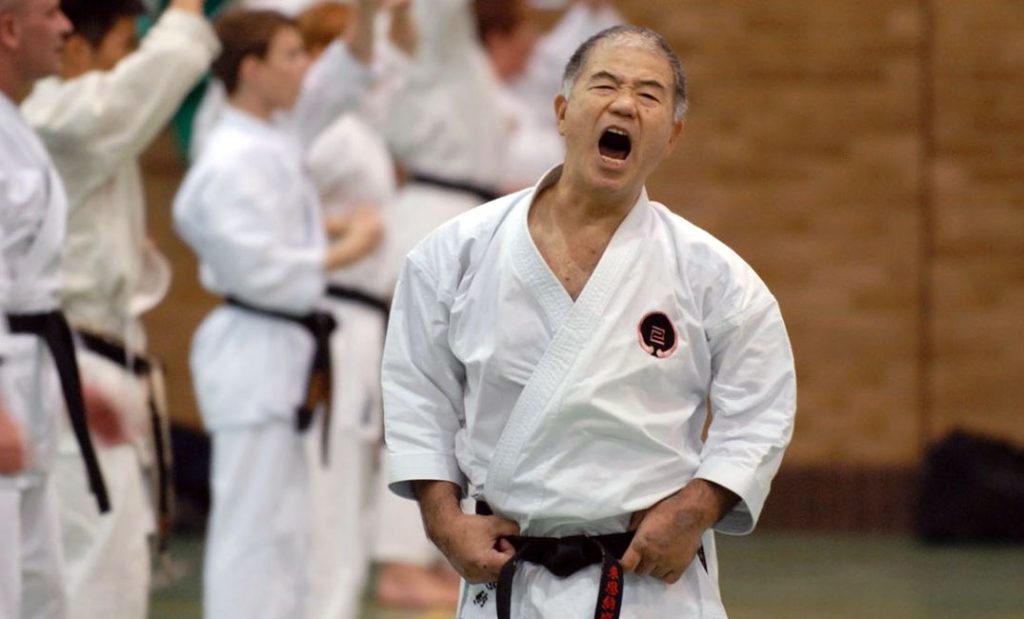
Don’t focus too much on styles, focus instead on finding a great Karate teacher. A great Sensei will teach you useful and practical ways to apply your techniques. In fact, a great Karate teacher is going to make the best out of any style. That’s what’s most important, that’s what you should look for.
The problem is, most people don’t know the difference between a good and a bad martial art teacher. A lousy Karate teacher is going to teach dangerous practices and habits which unfortunately can (and most probably will) get you in trouble in a real confrontation. On the other hand, a quality teacher will teach you good habits that will make a significant difference in a dangerous situation.
Also, don’t be easily seduced by a teachers lineage. There is a distinction between one teacher and its lineage. Unfortunately, it’s common for martial arts teachers to say “I studied under (insert teacher’s name here)”. Sometimes it’s true, sometimes it’s not, but in any case, the quality of a teacher matters more than its lineage. In an ideal world, lineage should be a seal of quality, but in reality, it’s not always the case.
It’s not the style that makes the practitioner
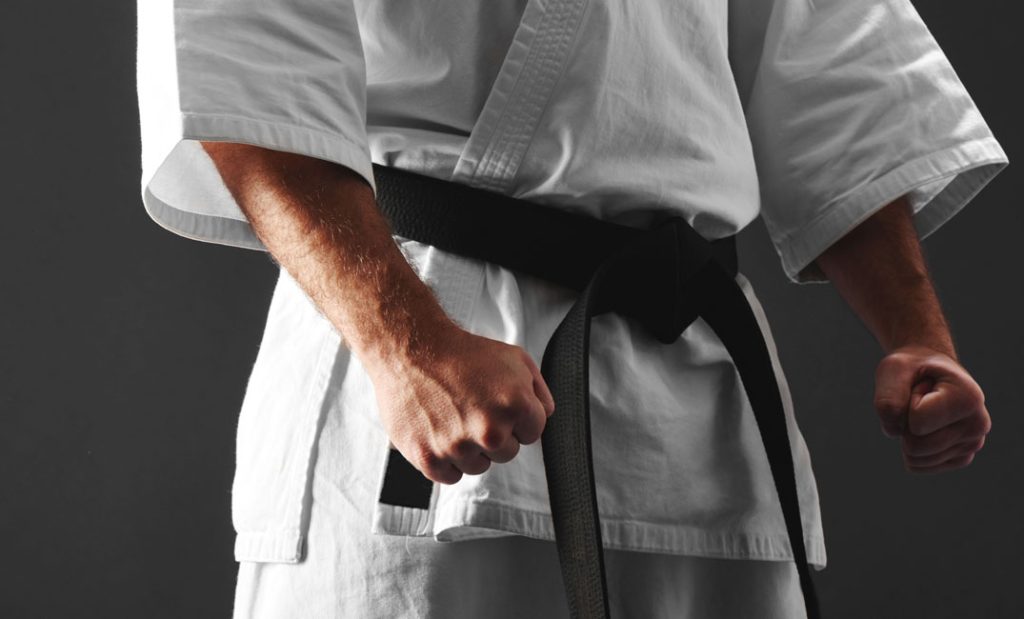
I think it is very naïve to talk in terms of style, we should be talking in terms of practitioner. It’s not the style that makes the practitioner, it’s the practitioner that makes the style.
You can be practicing Okinawan Karate style and be a lousy practitioner. I mean, it’s totally possible, right? You will find many questions on the Internet like “what’s more effective Karate or MMA?” or “is Kung-Fu better than Taekwondo”? I hope you realize how futile these questions are. No human beings are equal, even if they practice the same style. It’s not so much about the art, it’s about the skills and mental control of each practitioner. I think it’s pretty evident that it’s not so much about the style but more about the person behind the style. I think it’s totally possible to make every style great or every martial arts grade it depends on you it depends on the practitioner and not only on the style.
That being said, when you are a beginner, you are depending on the style that you practice for being effective. You don’t have the experience, so you absorb everything your teacher and your style is giving you. That’s totally normal, the teachings and the style become your point of reference. Only later on with enough experience and clarity, you’ll be able to grow beyond styles. It’s not the style that makes the practitioner, it’s the practitioner that makes the style.
Some styles are actually beyond styles
It might look like a contrast, but some styles are actually beyond styles. If you take Okinawan Karate, for instance, each style is beyond styles because they are trying to reach maximum efficiency in terms of self-defense.
Because Okinawan Karate is very much oriented toward practicality, it has no choice but to go beyond styles, because to be effective in a real life situation you need to train effectively, and to train effectively, you need to cover every aspect of personal protection. Okinawan Karate styles should be seen more like orientations than styles per se.
Originally Shuri-Te and Naha-Te were different, but today, styles are much closer together. Shuri-Te incorporates Naha-Te techniques and Naha-Te to incorporate Shuri-Te techniques. It’s pretty clear that they influenced each other. In Japanese Karate, the line between styles is much more defined and closely guarded.
I wanna eat the whole cake, not just a slice
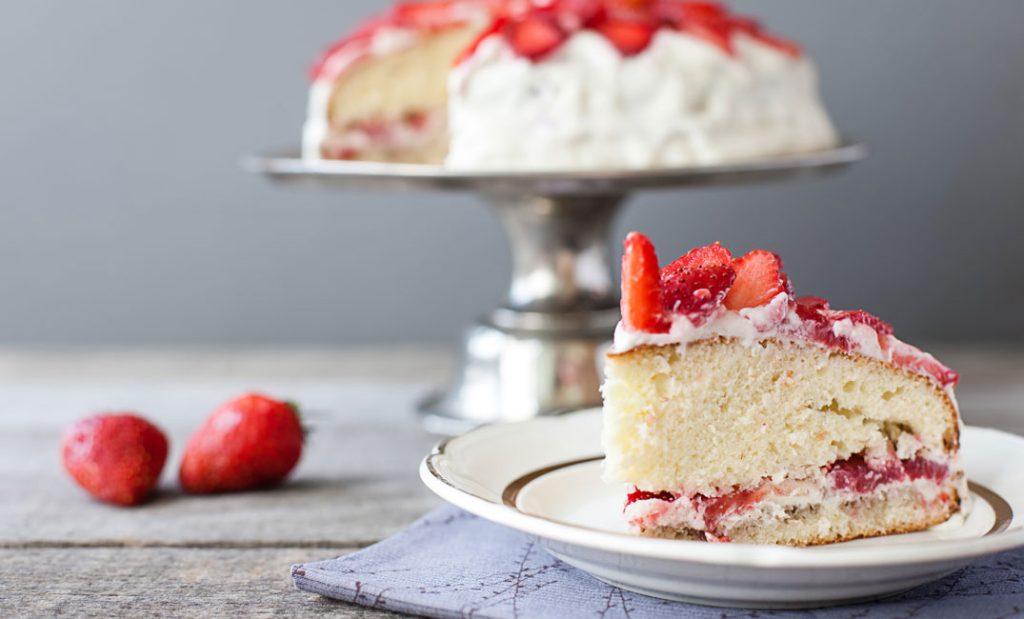
More than 25 years ago, I dropped my Karate style. I realize that I was more interested in eating the whole cake than only having a small piece of it.
When you meet people from other styles, when you see Karate practitioners on YouTube or wherever else, you realize that the world of Karate is vast, and it’s full of possibilities. Why restrict yourself to only a tiny portion of that? One thing is for sure, it didn’t make sense for me.
So personally, years ago, I started to blend both Shuri-Te and Naha-Te principles and applications in my training. Because I’m coming from Shuri-Te, so I began adding the half day into my practice. I didn’t want to be a long range fighter only. I started training at close range, that was difficult, but it was very much worth it. I started using both low and more natural stances, I started incorporating softer and “rounder” block from Naha-Te. In other words, I started practicing the Yin and Yang of every aspect of Karate. And honestly, I think that’s what you should do also.
I’m not here to tell you what to do or what to think, but I’m here to tell you this: the world of Karate is vast and rich, and you should benefit from it all. Please remove your colored glasses and look at Karate straight in the face.
Conclusion
I hope that after reading this article, you understand like I do that in reality there is no “best Karate style”, only best practitioners. That being said, some parameters need to be met for a style to be effective. It’s totally possible to incorporate those parameters into your actual practice, into your style and make it more and more effective. It’s not so much about what you practice, but more about how you do so.
- 10 Ways Meditation can Improve Your Karate - March 6, 2024
- Is Tai Chi Effective for Self-Defense? - February 16, 2024
- Do You Need to Add Ground Grappling Into Your Karate? - February 15, 2024

